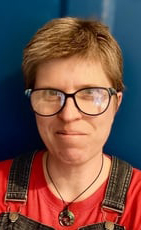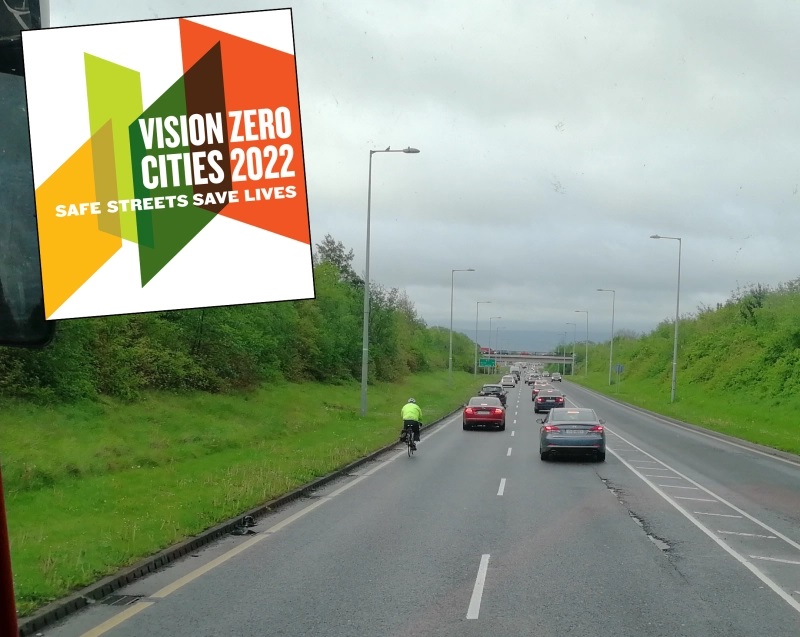Starting on Wednesday in New York, Transportation Alternatives will host its annual “Vision Zero Cities” conference. In conjunction with the confab, Streetsblog is posting content from the annual journal published by TransAlt. We’ll roll them out over the course of the week. Meanwhile, click here for the full conference schedule and to register.
There is a word that often has the same effect in comment threads on social media as a bucket of chum in a shark tank: cyclist. The intensity of feeling and free expression of aggression that would make us very uncomfortable if directed at any other group of people is prevalent enough to have invited comment and provoked discussion. Announcements of infrastructure for this road user group are so commonly met with virulent resistance that there is a name for it: bikelash. Why? What is it about cyclists that provokes such volatile emotions? This question can be answered through a sociological lens, by understanding the roads network as a social system.

What is a social system? And how can I suggest the combination of tar, cement, cars, bikes, buses, trucks and so on is … social? Sociologist Thomas Bottomore said social systems have the following characteristics:
- A system of communication
- An economic system dealing with the production and allocation of goods
- Arrangements for the socialisation of new generations
- A system of authority and of distribution of power
Let’s go through them one by one. There are formal and informal communications on streets. We all know the myriad signs and road markings that give us masses of information about the road we’re navigating, but there are other forms of communication unique to the roads: a driver who finally manages to get around someone slower can clearly communicate their feelings with a roaring engine, fast acceleration, jerky turns around the offending other. In my hometown in Ireland, stopping a car and flashing the lights invites someone waiting to cross the street to do so. Eye contact and a nod between two road users allow them to acknowledge each other’s presence and, often, intentions. This can go with a friendly wave or point – “I’m going that way” – and other fingers of the hand can be used to communicate less friendly messages.
These rules are then taught to following generations: we learn how to navigate roads and streets safely from our earliest years as we travel in our parents’ cars, walk hand in hand with them, and watch them take care of tickets and timetables for the bus, the train, the subway. We also learn formally at school and, in the case of driving, through professional lessons. Finally, police, traffic safety officers, and others are given the job of enforcing the rules, often using tools such as cameras.
This covers all but one of the basic requirements: an economic system dealing with the production and allocation of goods. What can the roads and streets possibly produce and allocate? Well, what is it that we all want when we are using the road? Two things: space and priority. Space is created through the building of the street itself, and allocated through the addition of painted lines, curbs, and material changes. Priority is partly allocated in this way too, but it is also done through the design of traffic management systems.
Here, then, we first start thinking of road user groups as social groups. Researchers in the Netherlands found in 2018 that the way people thought of the road user group they identify with (for instance “I am a cyclist” or “I am a driver”) is the same as how we think of social groups we are part of (for instance “I am American,” “I am in the XYZ Chess Club,” or “I am a woman”). There are many ways our thoughts and actions are affected by our self-identified social groups, both conscious and subconscious, and by our perception of others as members, or not.
Why does this matter? Social theories are not just any ideas, they are tried and tested ideas that are supported by a load of evidence and can help us understand behaviours and responses that are otherwise baffling. Let’s take a closer look at the theory most relevant to the aggression and volatile emotions triggered by the introduction of cycle lanes.
Imagine there’s a group called the Blues. Everyone knows the Blues have everything. If you see an expensive house, you’d assume a Blue lives there. The top universities are chock full of Blues, they get all the best jobs, the best table in the restaurant. Now, consider the Greens. They’re not quite as privileged as the Blues. If you see a shabby house you wouldn’t be very surprised to learn a Green lives there. Greens are way more likely to have blue-collar jobs, to live from paycheck to paycheck. So, Blues both have and are thought to have more of the tangible and intangible things that make life easier and better. Greens have and are thought to have less of the tangible and intangible things that make life easier and better.
Realistic Group Conflict Theory predicts that the Blues will tend to feel “threatened and protective” while the Greens will tend to feel “frustrated and resentful.” The groups are in competition for scarce resources, so antagonism and conflict should not surprise us.
When you think of drivers as Blues, and cyclists as Greens, the way people behave and talk might start to seem less surprising. Of all the main road user groups (i.e. pedestrians, cyclists, public transport users, and drivers), cyclists are in the most direct competition with drivers for the goods involved in the road network’s version of an economic system: space and priority. Cyclists, by existing, want to exercise a right to the same space we all tend to see as drivers’ rightful property. When sharing a lane, they are seen as “in the way,” robbing drivers of priority. When cycle lanes are installed, cyclists are seen to take away some of drivers’ goods. The aggressive response, bikelash, fits perfectly with the behaviour predicted by Realistic Group Conflict Theory.
How can this help us in making our roads more welcoming to everyone, especially vulnerable road users? My specialism is identifying and describing problems, turning masses of information into a tidied understanding of the issues, which in turn hopefully equips behaviour change specialists with empowering understanding of what they’re facing. However, my journey as an academic and a cyclist has given me some ideas I’d like to share.
Firstly, we can understand the hostility against cyclists as the result of quite powerful social forces. It’s almost not personal: thinking of it this way can help those trying to make things better to keep their cool. Secondly, we can understand that those people who go to the lengths of highly-organised opposition are likely to be very resistant to changing their minds. Their opposition is not rational. It might not be the best use of time to try to convince them.
What’s often been found when people start advocating for or implementing changes to our streets to make them more people-friendly is that there is a quiet majority who are not opposed to these measures. Giving this group a voice and showing in all information how relatively small the big voices are can give politicians a wake-up call on what their voters really want to see. Be ready: those opposing more people-friendly streets are often powerful and clever. They know how to make it look as if a handful of people is a whole crowd, and how to make people scared of nonexistent threats.
While in the UK, Low Traffic Neighbourhoods did not have a significant effect on voting outcomes, they are important enough to possibly tip the scales. Activists may want to educate voters as much as possible on people-friendly streets’ impact on residents’ quality of life, and how much it matters that we consider a candidate’s attitude to this incredible potential benefit for us at the ballot box.
This is not going to be an easy fight, but there are places where it has been fought and won. Be smart, be aware of what you’re up against, and keep going. We’ll get there in the end.
Nadia Williams is a Technological University Dublin PhD candidate and TU Dublin Research Scholar. A lifelong utility cyclist, she developed the thoughts and ideas which led to her postgraduate research project while cycling hundreds of kilometers across the length and breadth of Ireland in the late 2010s, participating in triathlons 2010-11, and commuting to and from Dundalk Institute of Technology by bicycle while completing a BA (Honors) in Communications in Creative Media. She now lives in Cavan with her husband, dog, and four cats.







